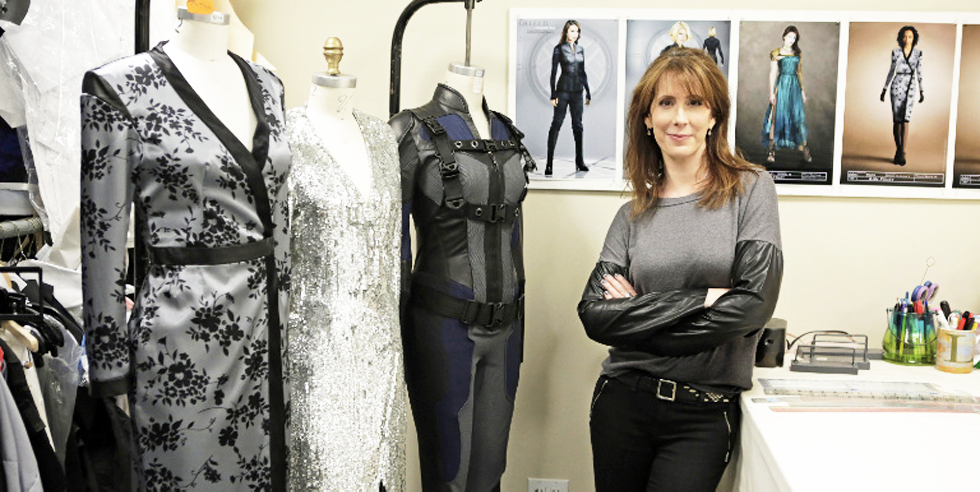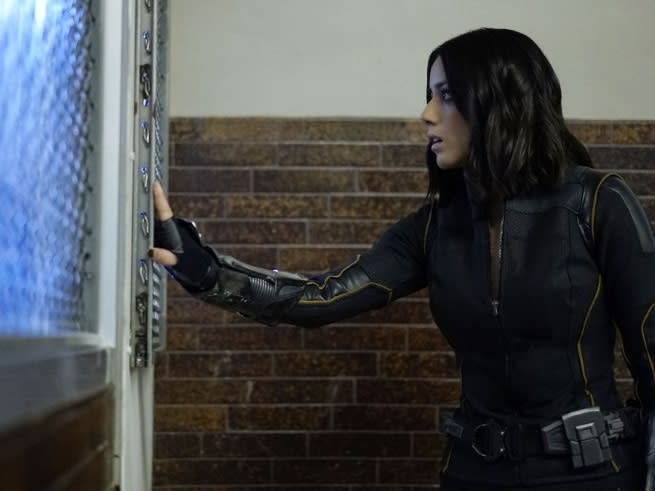What It's Like to Be a Costume Designer

1. You need to bug everyone you know to get a job - and I do mean everyone. I got my [first] job through a lot of networking and basically bugging everybody I knew until somebody broke down and introduced me to someone in the industry. That person - the brilliant costume designer Aggie Rodgers [who worked on Star Wars, Beetlejuice, and One Flew Over the Cuckoo's Nest] - was kind enough to introduce me to someone else who was working on her first film, who hired me as her costume designer. It’s an incredibly competitive field and you have to work every connection - including your uncle’s friend’s brother, or whoever has an “in” - you have to get jobs. If you don’t know anyone in Hollywood, keep networking until you do.
2. The job is more about research than it is about fashion. You have to know how to design clothes, but more importantly, you have to understand who is wearing them and why. If you’re working on a film set in France at the turn of the century, you need to know exactly what people were wearing at that time and incorporate that into your designs. I work on Marvel’sAgents of S.H.I.E.L.D., a superhero drama, so my designs have to incorporate every detail of the character’s powers and personalities. When I was designing Coulson’s look for the first season of Agents of S.H.I.E.L.D., I drew heavily on Daniel Craig from Skyfall. No matter what situation Bond is in, he is almost always in an impeccably tailored suit. His suit is his armor, and that’s exactly how I felt about Coulson. It’s good to always have references that you can draw on to help you get your vision across to the director, writers, and actors.
3. The writers will become your best friends. On my show, I work really closely with the writers to make these characters identifiable based on their costumes. Sometimes, when I get the script, the description of the costumes is right there on the page and then it’s my job to help bring that to life. For Agents of S.H.I.E.L.D., there are some existing designs from the original Marvel comics; for new characters, I rely on the writers to give me insight into who the character is so I can design a costume that makes sense.
4. You have to be able to handle a wide range of designs. You don’t want to be pigeonholed so it’s good to look for opportunities where someone will take a chance on you designing for another genre. It would be great to be able to work on something like Downton Abbey after having done a superhero show. In my own career, I went from working Star Trek to Behind the Candelabra to Agents of S.H.I.E.L.D. It was amazing to transition from science fiction to sequins to superheroes, and that kind of variety keeps me on my toes as a designer.
5. Coming up with a unique superhero costume or a period-specific outfit is easier than dressing someone who’s supposed to be living in the present day. The superhero costumes are so fun - our Quake costume was a blast to design - but the real challenges come in designing civilian clothes that are believable and still reflect who the character is. When you see the character arc develop in the script, you have to match that and tell a story with the clothes, which can be harder than coming up with a cool, flashy costume.

6. You have the power to show a character’s emotional journey through their costumes. On my show, I think you can see it best with the characters Leo Fitz and Jemma Simmons [who are both agents and main characters in the show]. In the beginning, they were more colorful, they wore more patterns, things like cardigans. Then in season three, Simmons experienced post-traumatic stress disorder, and we reflected that in her clothes: We stripped away all the patterns, all the color, and kept it very simple, to show her headspace. We also showed how much Fitz had grown up by replacing his cardigans and sneakers with slacks and sports coats.
7. The job is very “behind the scenes.” If you have visions of the glitz and glamour of a Hollywood job, this isn’t exactly it. I generally start my day in the office between 7:30 and 8 in the morning. I usually leave between 7:30 and 8 at night. I’m in the office every day; sometimes I’m on set giving the characters fittings or working with establishing scenes. On Agents of S.H.I.E.L.D., we’re shooting one episode and prepping for the next episode at the same time, so I’m generally in my office more than I’m on set. Most costume designers don’t become household names, so if you’re not comfortable working long hours for the benefit of the show, this isn’t for you.
8. The days are long and your time off is set by the show. Most of the time, we’re working 12-hour days; sometimes, it’s much longer. The good news is that it doesn’t go on forever. On my show, we do 22 episodes every season, and then we have a two-month hiatus where we get to take off. It’s kind of like a “summer vacation.” That’s my time to travel, catch up with my friends and family, or unwind from the season.
9. You absolutely need to be willing to take risks. I moved to Los Angeles with $500 to my name and one phone number in the industry. If I’d known then how competitive costume designing was, I’m not sure I would’ve taken that risk - but I’m glad I did. If you really want to do this, you need to be comfortable taking risks not only in jumping into the industry, but in your own designs. The only way to stand out is to bring something new to the table, so if you have a crazy idea, you just have to roll with it.
Ann Foley is the costume designer for Marvel’s Agents of S.H.I.E.L.D. and has also worked on Star Trek Into the Darkness, Fantastic Four, Date Night, The Wedding Planner, and Behind the Candelabra.
Follow Arielle on Twitter.
You Might Also Like


